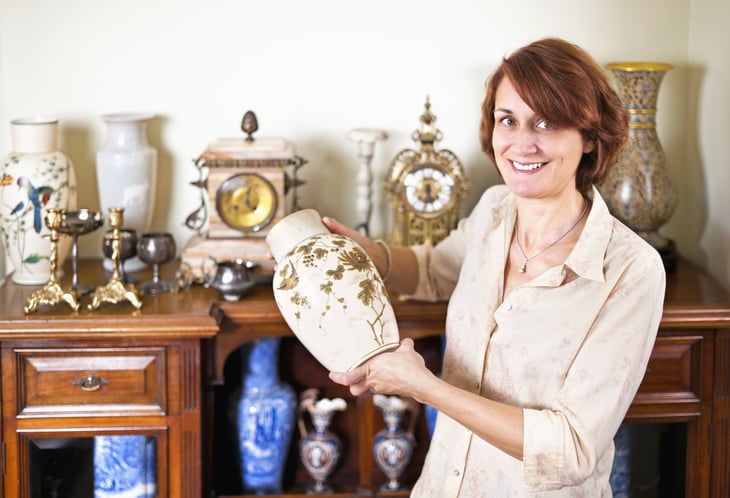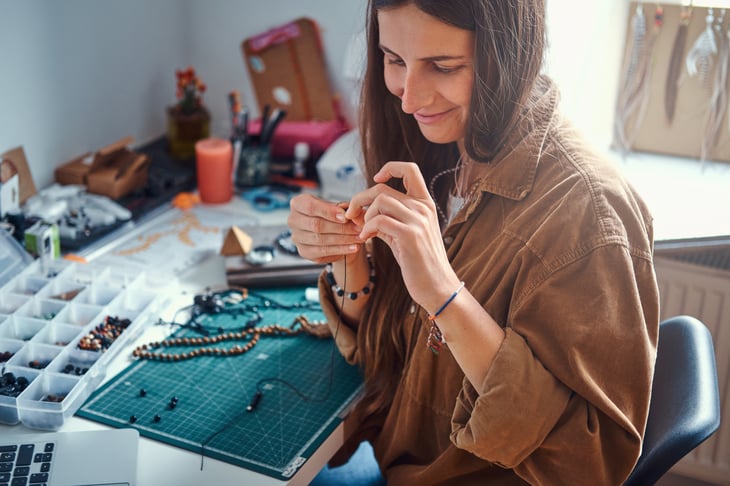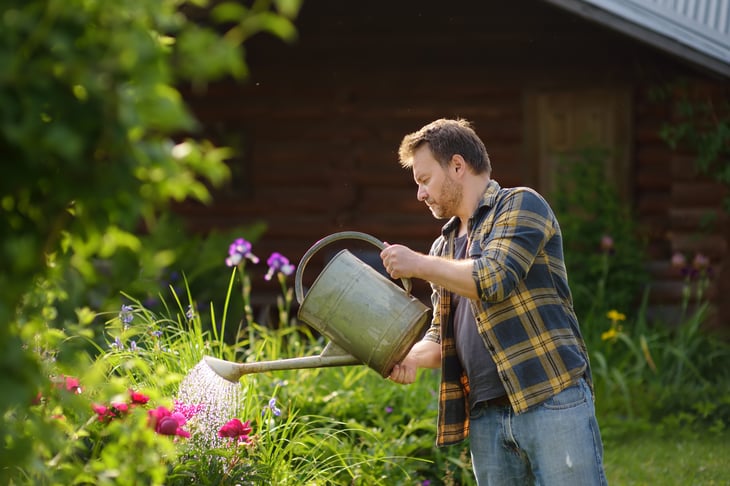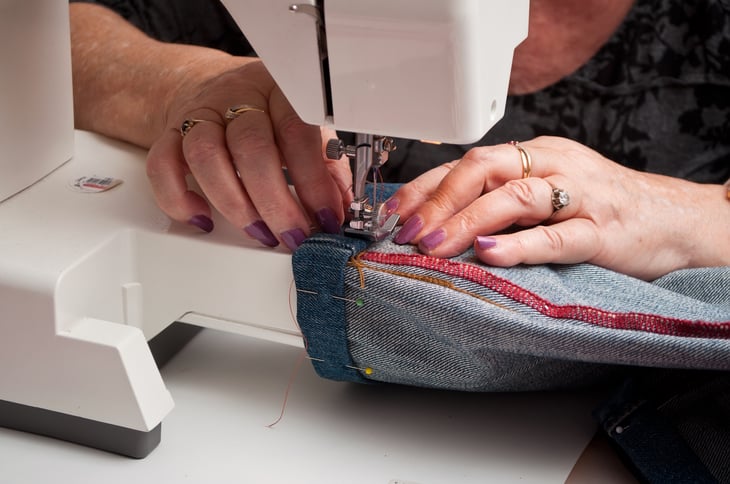
This story originally appeared on The Penny Hoarder.
The gig economy, supercharged by a pandemic, is breathing new life into some bygone hobbies, ones associated more with retirees than entrepreneurs.
Life indoors drove many folks to experiment with tactile hobbies like bread baking and quilting. What started as a way to pass the time could blossom into a side hustle with a little know-how.
Online platforms such as Facebook Marketplace, Etsy and Instagram as well as the revival of flea markets — often with a trendy, indie twist — offer novel ways to make money on those age-old crafts and activities.
Here’s a look at several trending hobbies that could make you serious money. These are not your grandma’s side gigs.
1. Antiquing

Buy old furniture and/or tchotchkes, then resell them for a profit. The concept is straightforward, and it’s sometimes referred to as upscaling or upcycling when you work a little magic on the item to bump up the price tag.
The Penny Hoarder spoke to Sara Chen, a master of upcycling. She focuses her efforts on flipping furniture, hunting for antique, mid-century modern dressers online via Facebook Marketplace.
When she finds a good deal, she buys it, sands it, paints it, primes it and resells it — usually for triple or quadruple the purchase price. She’s able to make $3,000 a month consistently.
Her secret (besides serious painting skills)?
“Post as many pictures from different angles as you can,” she told The Penny Hoarder, noting that taking photos is her favorite part of the flip. “It’s also probably the most important part.”
Make sure they’re high quality and in good lighting. The more the better.
2. Baking

It takes time for dough to rise.
Baking, because of the equipment required, is a hobby that can be difficult to scale into a side gig or a business. But over the years, The Penny Hoarder has talked with several bakers who made it work and a few who started during the pandemic. You can lean on their advice no matter what stage you’re at.
Sarah Tennant started baking as a hobby when she was 14 years old. She decided to try to earn a profit from her skills by taking ad hoc requests from friends, family and referrals.
In her guide for The Penny Hoarder, she outlined how her cakes, which she priced much lower than professionals, still brought in $400 a month.
College roommates Sarah Chappell and Julia Finfrock found success with their sourdough side hustle called EarlyRisers. In October 2020, the duo started out selling plain sourdough for $7 a loaf. As orders increased, they started experimenting with flavors, adding chocolate-chip, rosemary, garlic and other flavors to the menu. These specialty loaves sell for up to $11.
“It was a lot of trial and error,” Finfrock told The Penny Hoarder.
3. Crafting

Thanks to online marketplaces like Etsy and Amazon Handmade, crafting is seeing a huge comeback. And we have plenty of ideas for you to cash in on its popularity.
Local fairs and online marketplaces are ideal places to sell easy-to-make holiday decorations.
Some examples of low-cost decorations include:
- Scrap wood stocking hangers
- Sock snowmen
- Pumpkin spice soap
Of course, you’re not limited to holiday decor. You could also try your hand at DIY greeting cards or handmade wedding invitations.
When you’ve decided exactly what you want to make and sell, keep costs low by finding cheap crafting supplies. Dollar stores are a good place to start.
4. Gardening

Millennials love plants, according to Money, the Huffington Post, CNBC, Business Insider, the New Yorker and apparently the entire internet.
Further proof: A plant aesthetic has blossomed on social media, especially Instagram. The hashtags #Plants and #PlantsofInstagram have tens of millions of posts. Outside of the local market scene, a lot of small-scale operations use Instagram to sell their plants.
Selling succulents probably isn’t going to allow you to quit your day job, but it may pad your savings or help you pay down debt.
One gardener, Stephanie Spicer, made $1,200 in a single season. In her guide to selling plants, she outlines exactly how to choose, fertilize, present, price, advertise and sell them.
5. Knitting, Sewing, Quilting

Boo, fast fashion trends. Yay, making and altering your own clothes. As sustainability becomes more of a conscious decision for many consumers, skills like knitting, sewing and quilting are seeing renewed demand.
If you want to lean into the gig — beyond a few online sales — there’s some money to be made. The Penny Hoarder spoke with retired geologist Pat Martinek, who found a way to monetize her weaving and spinning skills through her side business The Fyber Cafe. Martinek raked in $10,000 a year by using chiengora, aka recycled dog fur, to create garments and keepsakes.
“It is warmer than other fibers, so a scarf or sweater made with chiengora can help you withstand the most brutal temperatures,” she said.
Ella Trout, a college student at the University of Vermont, is another example of how to cash in on the handmade trend. She founded puppycatco, her sustainable fashion side hustle, a couple of years ago.
She started by screenprinting her dog and cat designs onto T-shirts, but changed her business model over the years. Now, she sews and alters clothes to be more environmentally sustainable. Trout uses Instagram to sell her creations, and she told The Penny Hoarder that her handmade clothing and accessories earn her up to $1,500 per month.
6. Using the Library

Libraries are one of the only remaining places where you can just exist. Just be there. For free. There’s no expectation to spend money. That alone should be reason enough to visit.
As an additional incentive, libraries offer access to a bunch of interesting things besides books that can help you launch a side gig or business. Tools, baking equipment, seeds and even high tech are often available at no cost through a process called inter-library loans.
“Maybe you want to make a cow-shaped cake. You don’t have to buy that cake pan,” said Bob Anstett, of the Broward County, Florida, library system. “You can check it out from a library.”
In addition to the fun stuff you can rent for free at your local library, Anstett explained that libraries have expanded to home community workshops called maker spaces. Maker spaces offer up all kinds of equipment for locals to tinker with and use to hone new skills.
“You can come in and take a basic class at [our maker space] and use our sewing machines,” Anstett said. “Used to be that you were called a knitter or a carpenter or a woodworker. Now, you’re a maker.”





Add a Comment
Our Policy: We welcome relevant and respectful comments in order to foster healthy and informative discussions. All other comments may be removed. Comments with links are automatically held for moderation.